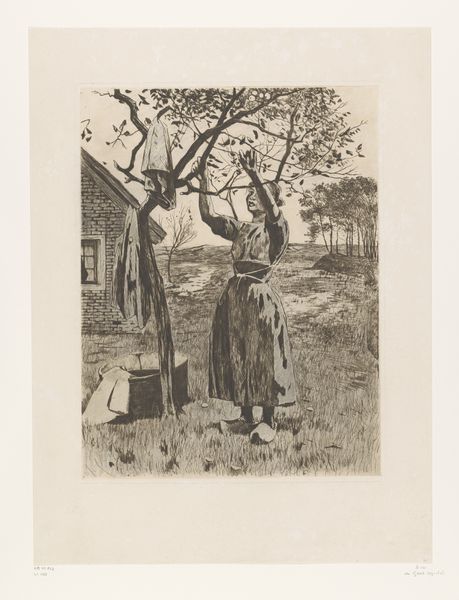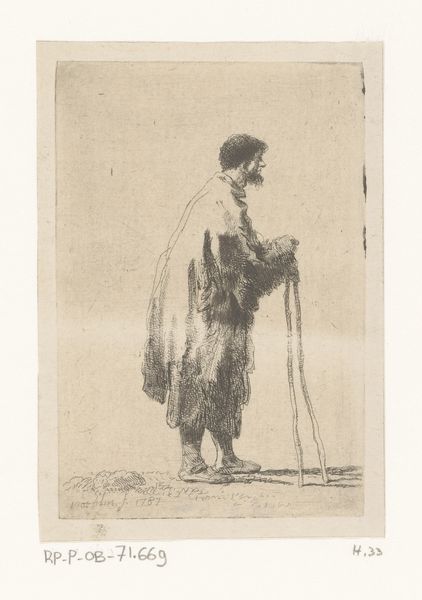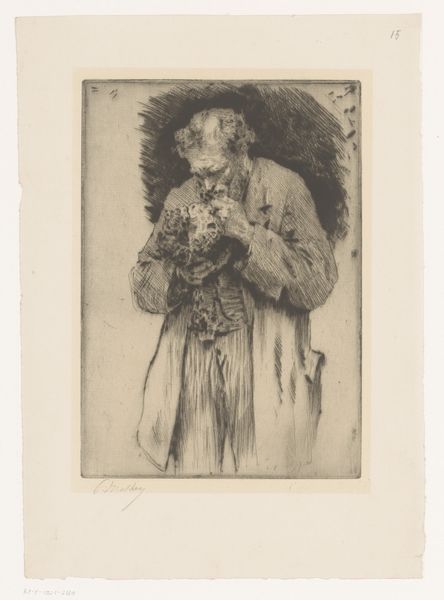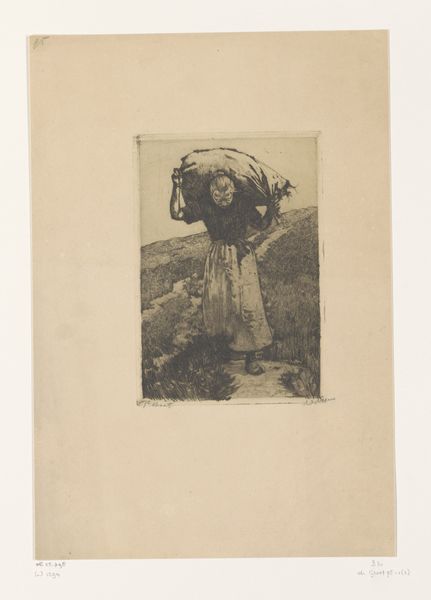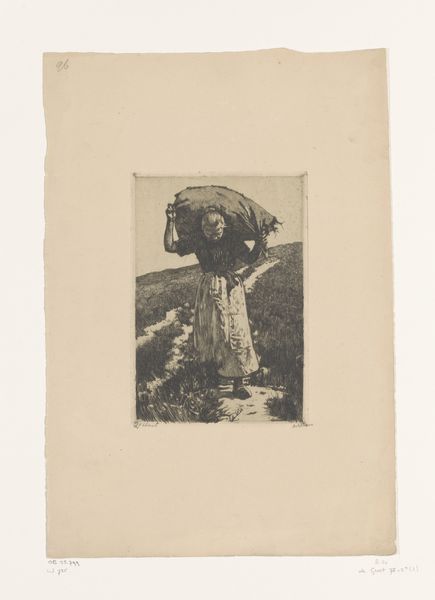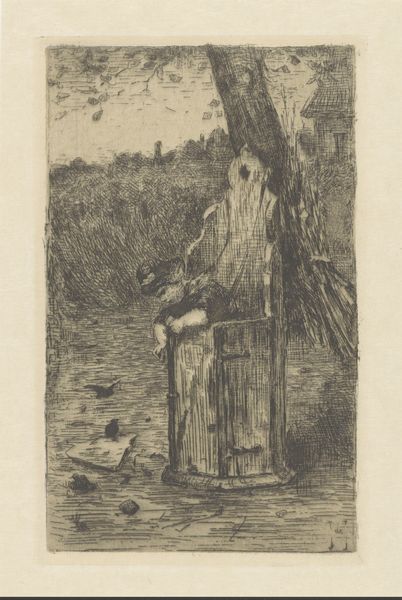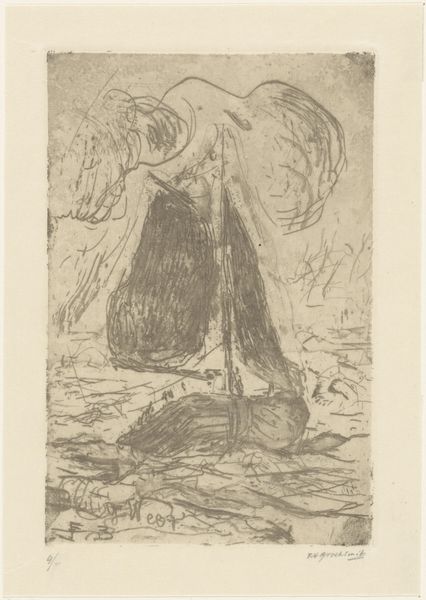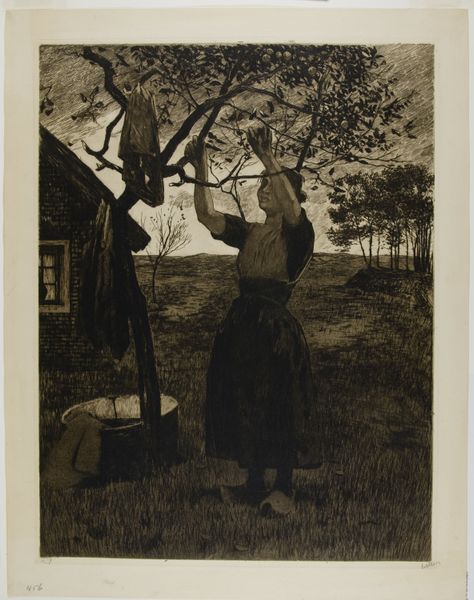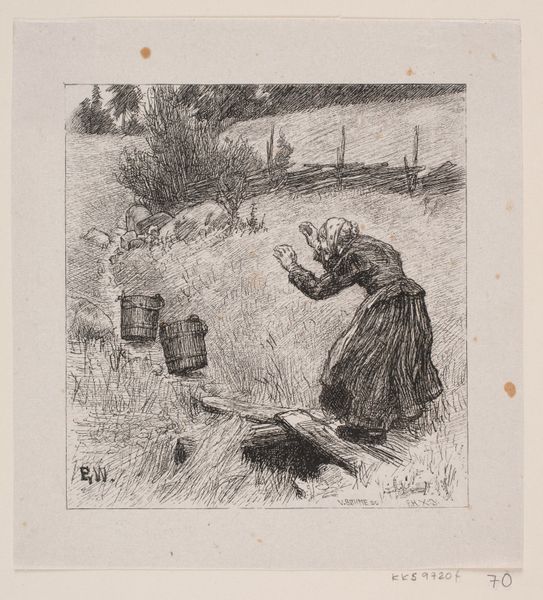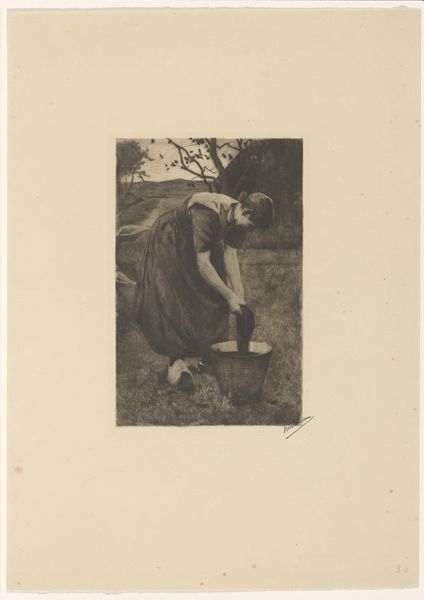
drawing, print, etching
#
portrait
#
drawing
# print
#
etching
#
old engraving style
#
landscape
#
genre-painting
#
realism
Dimensions: height 240 mm, width 180 mm
Copyright: Rijks Museum: Open Domain
Editor: This is Edgard Farasyn's etching, "Oude vrouw met wandelstok en takken over de schouder," dating from somewhere between 1868 and 1910. I find its grainy texture quite melancholic. What stories do you think it tells? Curator: It speaks to the intersection of gender, age, and labor within a specific socio-economic context. Note how the woman is bent, burdened by both age and the literal weight of the gathered wood. It invites us to consider the lives of working-class women and the often-invisible labor they performed. Editor: The way she is moving into the distance is interesting; what are your thoughts on how her movement informs how we might interpret the image? Curator: Her movement suggests a cyclical journey, perhaps a daily one repeated over years. It reflects the limitations placed upon her, and raises questions about the accessibility of resources, about who controls the means of survival, and about the relationship between humanity and nature. Does the landscape offer solace or indifference? Editor: It's powerful to think of this artwork as a representation of a person, or even the history of working women in general, as oppressed people. The artist must have had some sympathy for his subject. Curator: Indeed. By focusing on a subject often ignored or marginalized, the artist engages in a subtle act of resistance, offering a glimpse into a world that demands our attention and empathy. But, do we also need to address how social class might have informed how and why the artist represented her in this way? Editor: That’s a very good question that provides a sobering counterpoint. I’ve definitely learned to consider such works more intersectionally, viewing art as deeply embedded within societal power structures. Curator: Precisely, and these layered perspectives help us to have more meaningful conversations on the power of art and how that power can shift in relation to culture and history.
Comments
No comments
Be the first to comment and join the conversation on the ultimate creative platform.
